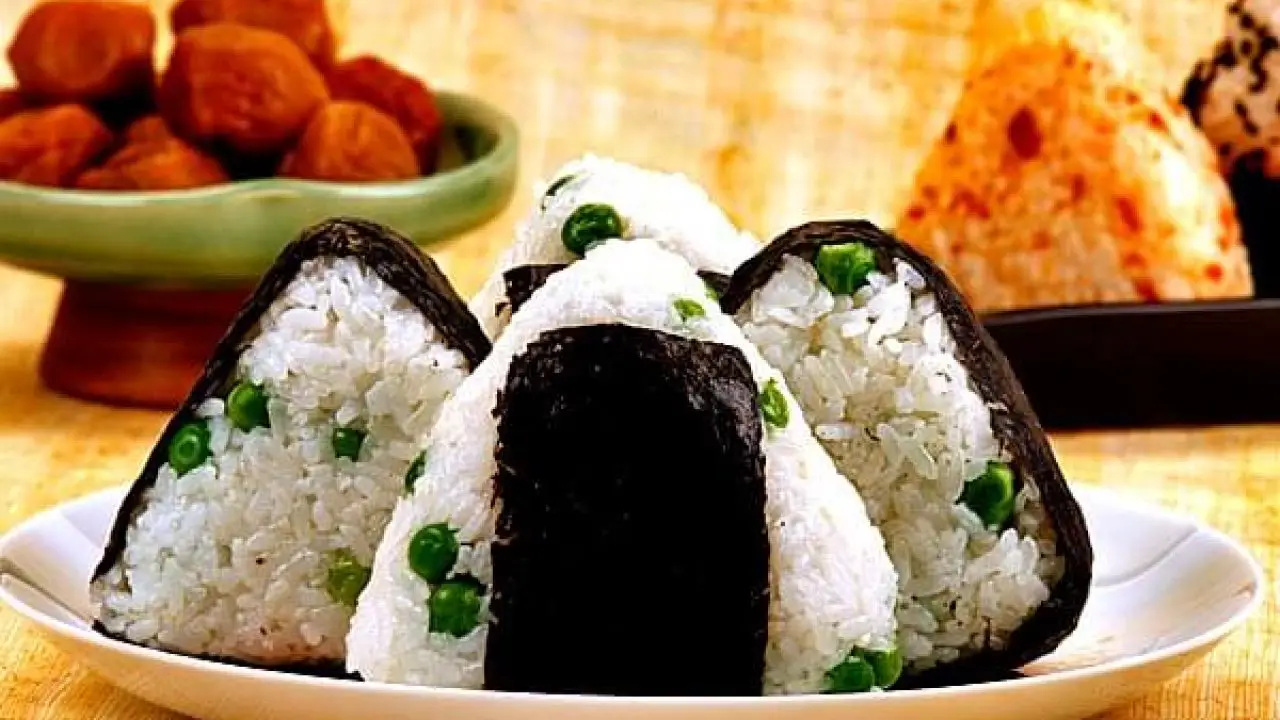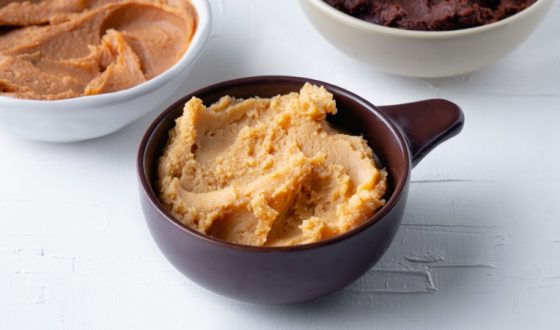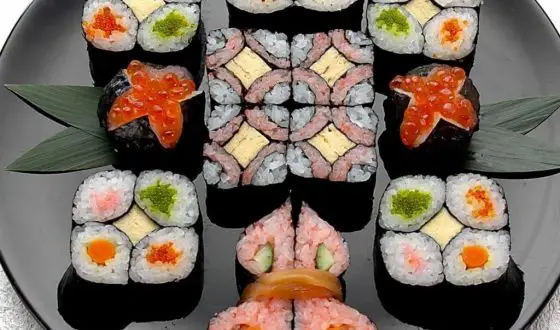How To Make Onigiri – A Comprehensive Guide
When mentioning Japanese cuisine, what will first pop into your head? Besides internationally well-known dishes such as ramen or sushi, onigiri is one dish that is familiar with any Japanese since childhood. This dish has long since appeared in Japanese daily life and been mentioned in many fairy tales. Nowadays, onigiri is even more popular due to its compactness, portability and simple recipe. Now, let Question Japan provide you a brief introduction of the dish as well as tips on how to make onigiri like a pro.
How to make onigiri – easy recipe
Definition and history
Technically speaking, Onigiri is a rice ball wrapped in seaweed and served with various types of fillings. These Japanese rice balls are favored by Japanese people of all ages. Just like pizzas in Italy or sandwiches in Britain, this dish is very popular in Japan and could be found in any konbini (convenient store). In Japan, it can be considered a type of snack, but this is much healthier than others like cheeses, chocolate bars or doughnuts.

Onigiri has a history of roughly 2000 years
Now, let’s have a look at onigiri’s history. This dish has appeared in Japan for roughly 2000 years. Japanese people have been eating rice for a long time. Archaeologists have recently excavated a carbonized handful of rice, which dates back to the Yayoi Period (300 BC–300 AD). This fossil shapes like an egg, and has a sign of squeezing on it. Therefore, it can be considered the very first onigiri. The next phase in the development of this dish is in Heian period (794-1185). In this time, people started to shape rice ball into a cylinder and called it “tonkinji”. The closet version to our today onigiri was in Edo period (1603-1868). Nori (seaweed) was more accessible to common people, and they used it to wrap onigiri. Thanks to nori, the rice no longer sticked to human hands when they enjoy it.
Onigiri categorization
Since Japanese people love onigiri, they have created a variety of types, which are different in shapes, fillings, wrapping and taste and ways of cooking. In the following part, Question japan will introduce some of the most famous varieties categorized by wrapping, ways of cooking and onigiri fillings.
Wrapping and ways of cooking
The filled, nori covered style
This is the most popular style in Japan, and you often see it in any manga or TV drama.
It is simply a handful of rice with fillings inside and wrapped in a thin piece of dried seaweed (nori). The nori can fully cover the body of the rice ball or just several sides.

The plain, unadorned, unfilled style
This is a plain rice ball with completely no fillings or covers. It is a perfect choice if you want to enjoy the pure flavor of the rice.

The visible-inside style
This type is similar to the filled, nori covered onigiri. However, what sets it apart is that you can see the fillings and the nori just partly cover the ball.
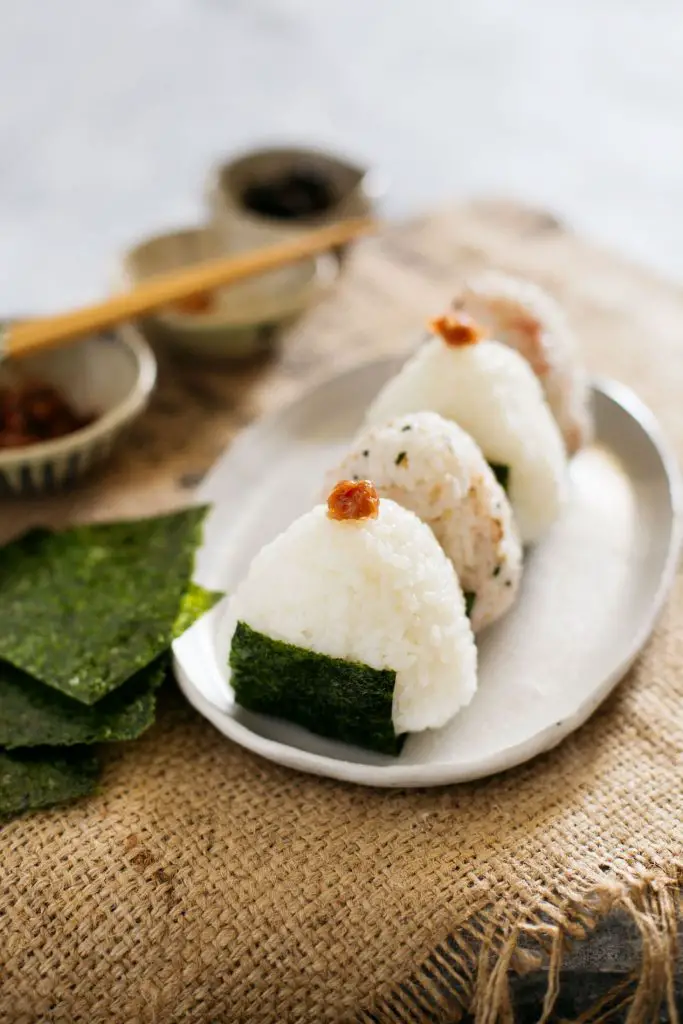
Onigiri with alternate wrappings
Nori is the basic and the most common wrapping. However, you can see the rice ball somewhere wrapped in alternative coverings such as nozawana zuke (pickled green leaves), hakusai zuke (pickled nappa cabbage) or even kimchi. This type can include fillings or no fillings, depending on the saltiness of the wrappers.

The sprinkled/seasoned style
If plain onigiri is not your cup of tea, and you are tired of wrappers, then try this sprinked style. As the name says it all, this type is sprinkled on the outside with seasonings like sesame seeds, dried shiso leaf powder or furikake topping. Those seasonings all taste good on rice.

The mixed-rice style
In order to make this onigiri, you have to mix the rice with other ingredients first, before forming the ball. Anything can be mixed with rice as long as it is not too oily or moist to prevent the ball from falling apart. Japanese people tend to mix rice with green peas, brown rice, edamame, wakame seaweed, clams or furikake.This kind of onigiri has no fillings and no wrappers.

Yaki Onigiri – grilled style
This rice ball is cooked over an open flame on a wire grill until the exterior becomes crispy, then brushed in soy sauce glazes or savory miso butter.

SEE MORE:
Onigiri fillings
Nowadays, onigiri fillings are creative. Any ingredient you like can be added into the rice ball as long as it is not too oily or moist. However, Question Japan will introduce several traditional fillings and the corresponding names of the onigiri.
- shiozake (salted salmon)
- umeboshi (Japanese pickled plum)
- okaka (bonito flakes moistened with soy sauce)
- kombu (simmered kombu seaweed)
- tuna mayo (canned tuna with Japanese mayonnaise)
- tarako (salted cod roe)
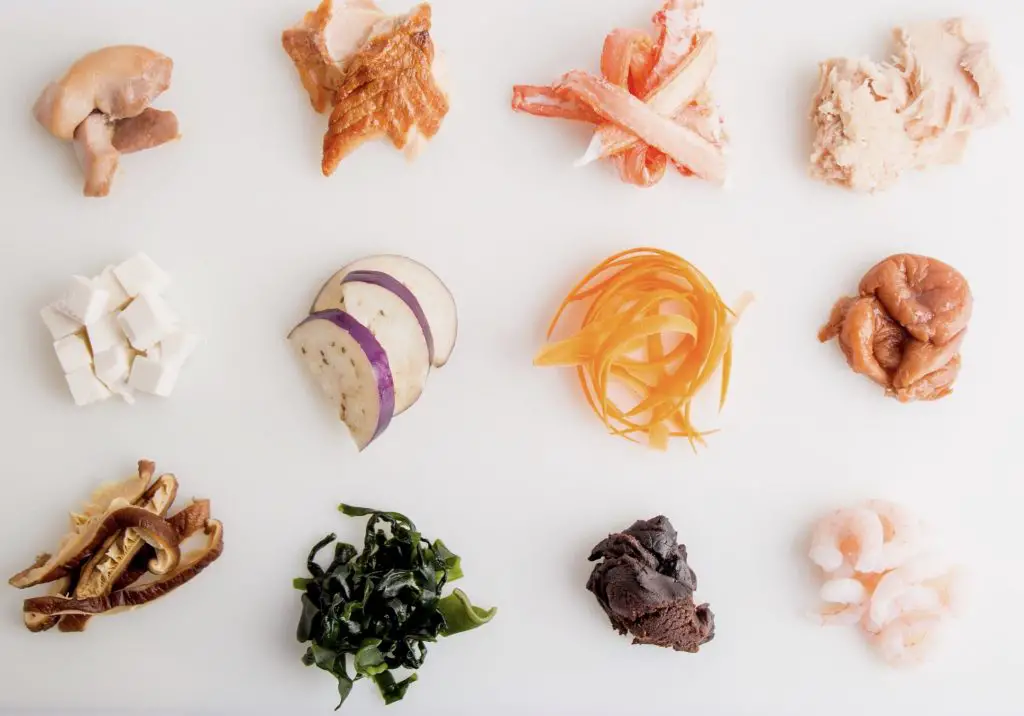
The fillings depend on your favorites
Onigiri recipe
Ingredients
- Steamed Japanese rice
- Salt
- Fillings (depending on your favorites)
- Toppings (optional): roasted seaweed/ black sesame seeds, shichimi togarashi (a Japanese spice blend made up of ground sesame seeds, orange peel, and chili pepper).
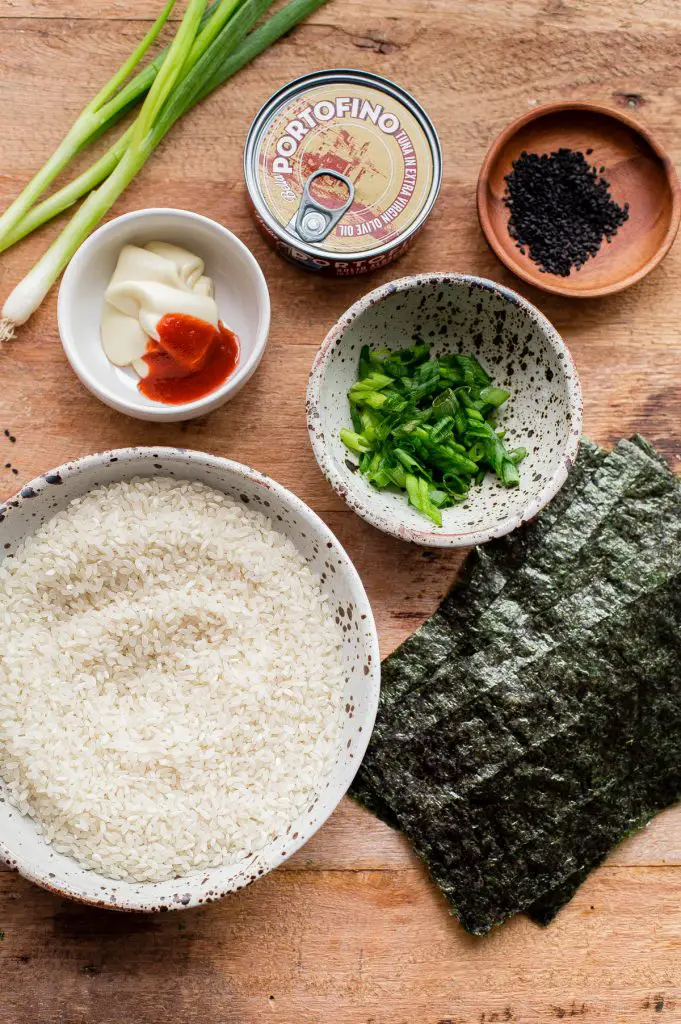
Spicy tuna onigiri ingredients
How to make rice balls
1. Cook the rice then put some rice in a small bowl to let it cool off in a few seconds instead of putting hot steamy rice straight from the rice cooker so that it doesn’t burn your hands.
2. Wet your hands with water, so that the rice won’t stick to your hands.
3. Sprinkle some salt on your hand to flavor the rice ball.
4. Place the rice in one hand then press and form it into any shape you want. However, the traditional shapes are triangle, flattened round or oval, as they are more convenient for biting than any other shape.
5. Add the feelings:
- If you love the visible-inside style, put the fillings onto rice then push the fillings into the rice lightly enough for the rice ball to reveal the fillings.
- If you love the filled-inside style, dig a well in the center of the ball and fill the fillings in. After that, continue kneading until the fillings are completely hidden inside.
6. (Optional) Sprinkle some sesame seeds on the rice balls and wrap them fully or partly with the seaweed strips.
7. Serve and enjoy
Note: The perfect rice ball is not too soft or too firm.
Frequently asked questions besides how to make onigiri
What are the differences between sushi and onigiri?
- Vinegar is used on sushi rice, salt is used for onigiri.
- Sushi is meant to be taken in single bite, while it is hard to enjoy an onigiri ball in one bite.
- The sushi fillings are revealed and meticulously arranged, while onigiri fillings are mainly hidden inside the rice ball.
Dispel some misunderstanding about onigiri.
- Onigiri doesn’t need to be in a triangular shape. It can be in any shape you like.
- Some onigiri types may include no fillings nor noro wrapper.
- If the rice is sushi rice (flavored with sushi vinegar), it is no longer onigiri, it’s sushi.
When do Japanese people eat onigiri?
In Japan, onigiri is basic convenience food. People carry them on hikes, car trips, have them for breakfast, as late-night snacks…etc.
Conclusion
Onigiri is convenient, easy-making and typical of Japanese folk cuisine. This dish closely associates with the daily life of Japanese people. When you visit Japan, don’t forget to stop over any konbini or onigiri restaurant to enjoy this popular delicious and nutritious snack. If you come back home and still miss this dish, you can learn how to make onigiri through the easy recipe that Question Japan has introduced. If you have any questions related to onigiri, feel free to let us know in the comment section, and we’ll discuss them later.

